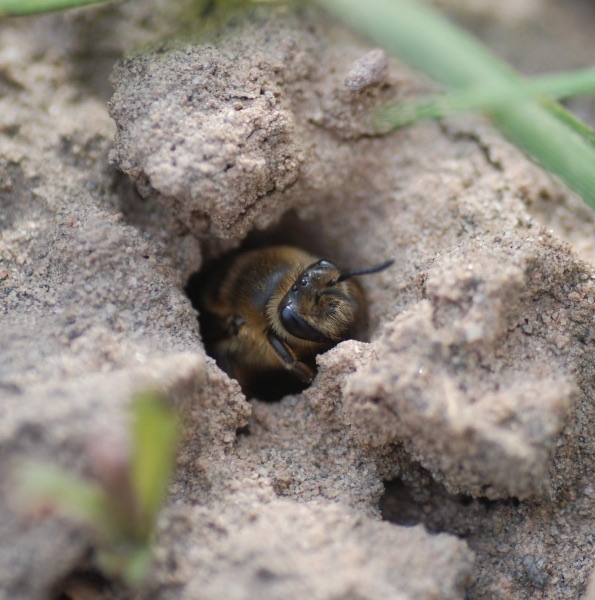
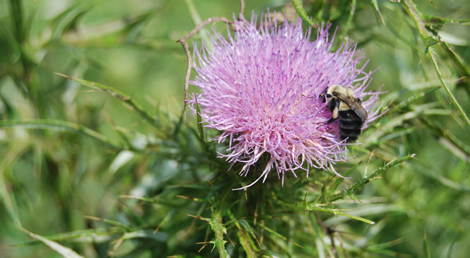
Bee Types
Worldwide, there are over 20,000 bee species in seven Families. Some commonly encountered and recognizable genera in eastern North America are described below.
Family Colletidae—Plasterer and Masked Bees

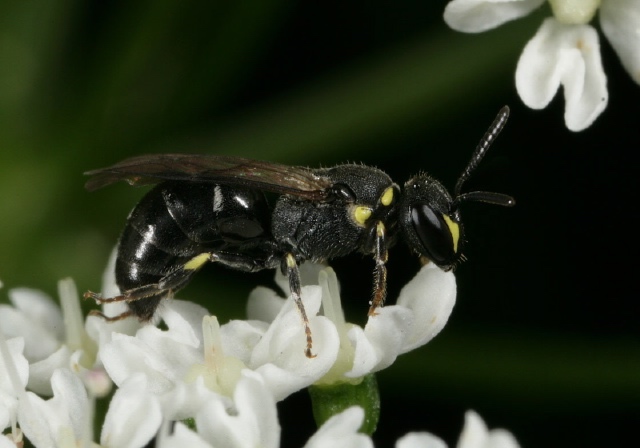
Masked bees (genus Hylaeus)
Family Halictidae—Sweat Bees
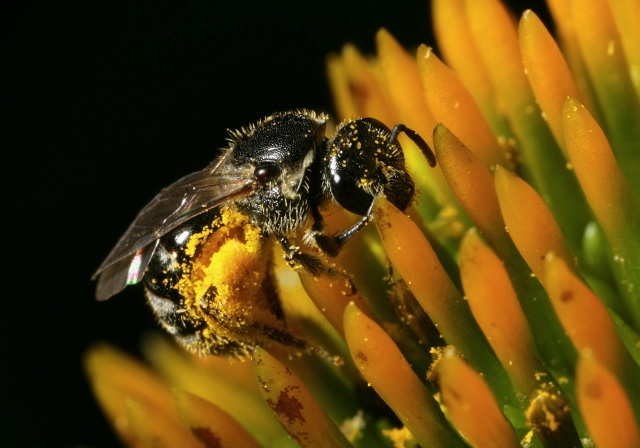
Small sweat bees (genus Lasioglossum)
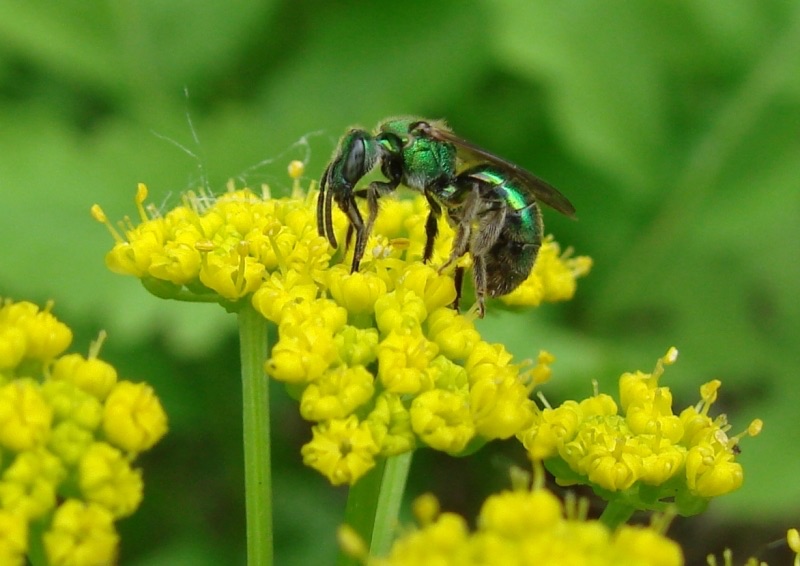
Green metallic bees (genera Agapostemon, Augochlora, and Augochlorella)
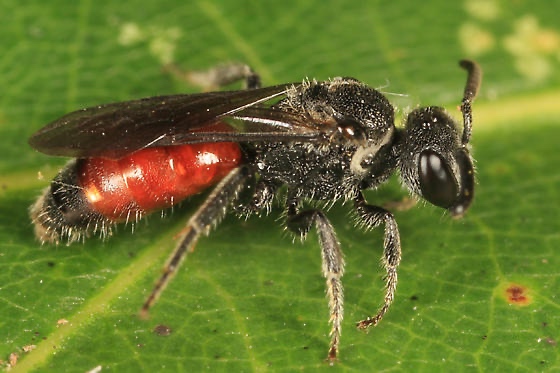
Sphecodes cuckoo bees (genus Sphecodes)

Family Andrenidae—Miner Bees
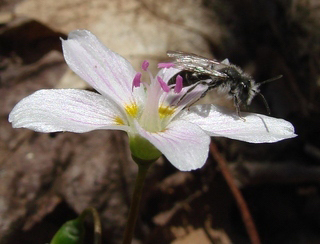 Miner bees (genus Andrena): A highly diverse but sometimes difficult to observe group. Most are solitary nesters that build their nests in the soil and emerge only in early spring. Can be small to medium in size and exhibit a variety of colorations.
Miner bees (genus Andrena): A highly diverse but sometimes difficult to observe group. Most are solitary nesters that build their nests in the soil and emerge only in early spring. Can be small to medium in size and exhibit a variety of colorations.
Family Melittidae—Melittid Bees
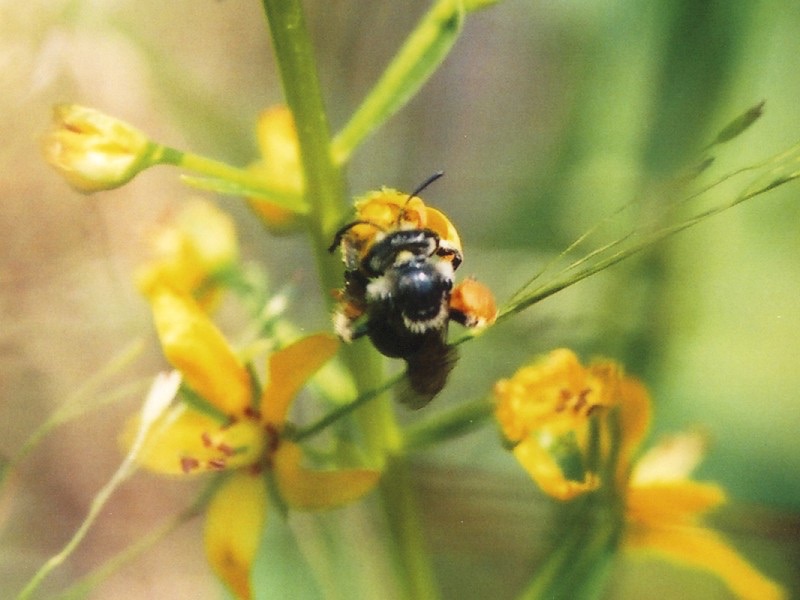 Macropis oil-collecting bees (genus Macropis): Small (< 0.8 cm). Males have entirely yellow face. In addition to gathering pollen, these bees also collect floral oils from yellow loosestrife flowers. These oils are mixed with the pollen as food for their developing larvae and are used to line their brood cells to provide a protective layer. These bees are of regional conservation concern. They construct nests in the ground, often near wet habitats.
Macropis oil-collecting bees (genus Macropis): Small (< 0.8 cm). Males have entirely yellow face. In addition to gathering pollen, these bees also collect floral oils from yellow loosestrife flowers. These oils are mixed with the pollen as food for their developing larvae and are used to line their brood cells to provide a protective layer. These bees are of regional conservation concern. They construct nests in the ground, often near wet habitats.
Family Megachilidae—Leaf-cutter Bees, Mason Bees, and Allies
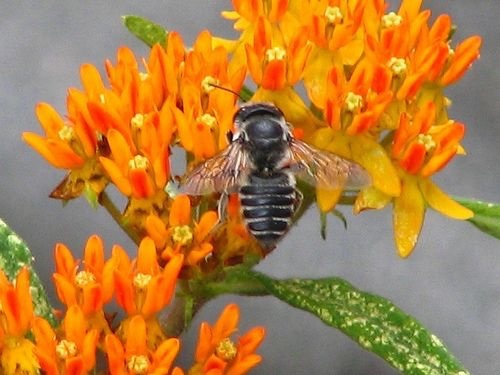
Leaf-cutter bees (genus Megachile)

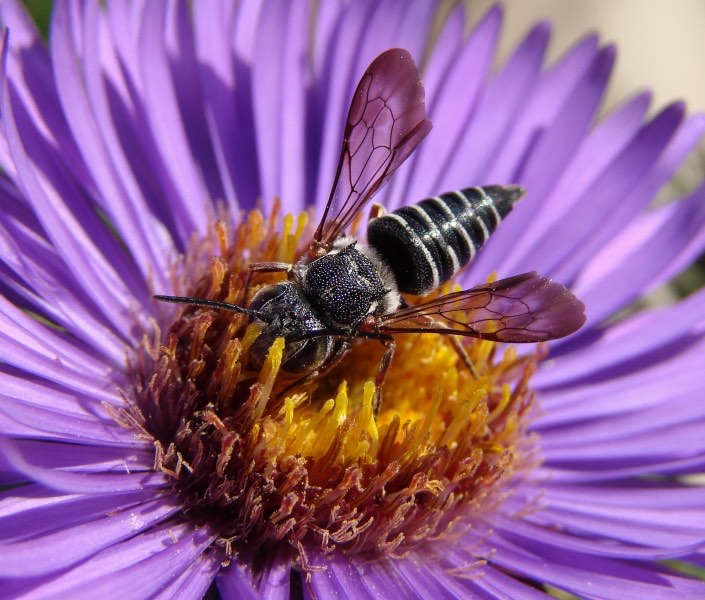
Leaf-cutter cuckoo bees (genus Coelioxys)
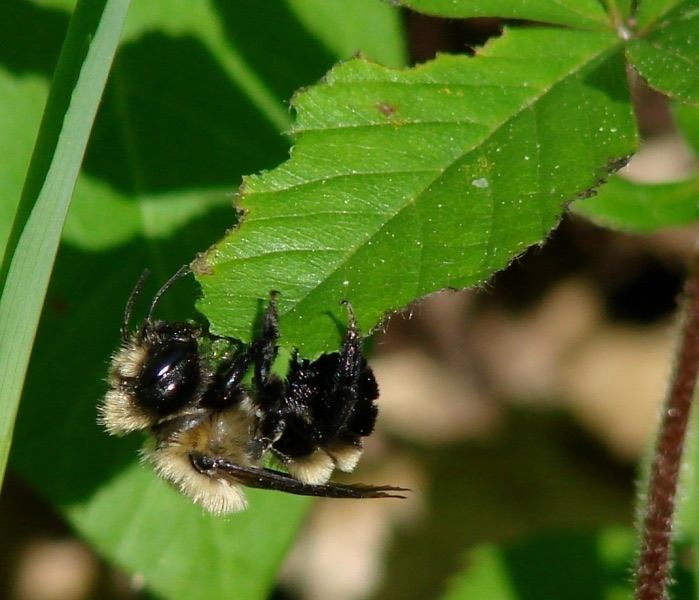
Mason bees (genus Osmia)
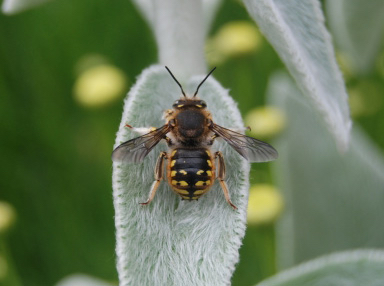
Wool carder bees (genus Anthidium)
Rotund, medium-sized bees with distinctive yellow and black coloration. The common name is due to the behavior of the females, who scrape hairs off of leaves to create a soft nest where they lay their eggs. Often observed on the garden plants lamb’s ear (Stachys lanata byzantina) and foxgloves (Digitalis species).
Family Apidae—Bumble, Honey, Cuckoo, Long-horned, and Carpenter Bees

Bumble bees (genus Bombus)
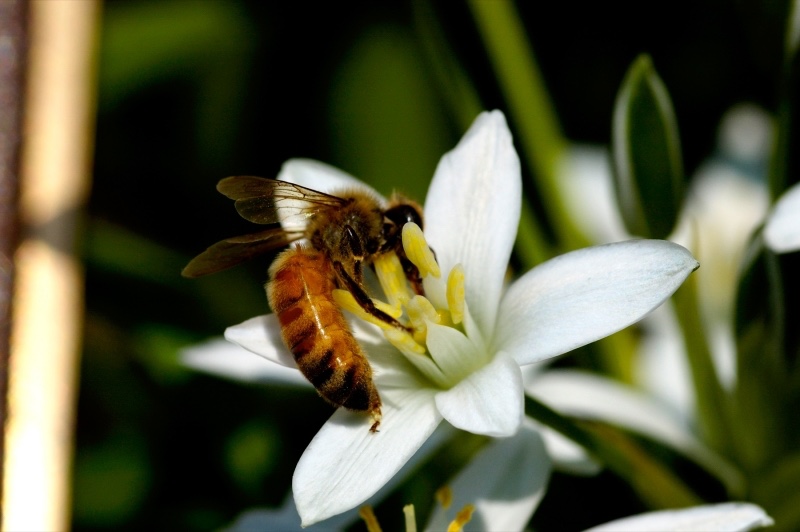
Honey Bee (Apis mellifera)
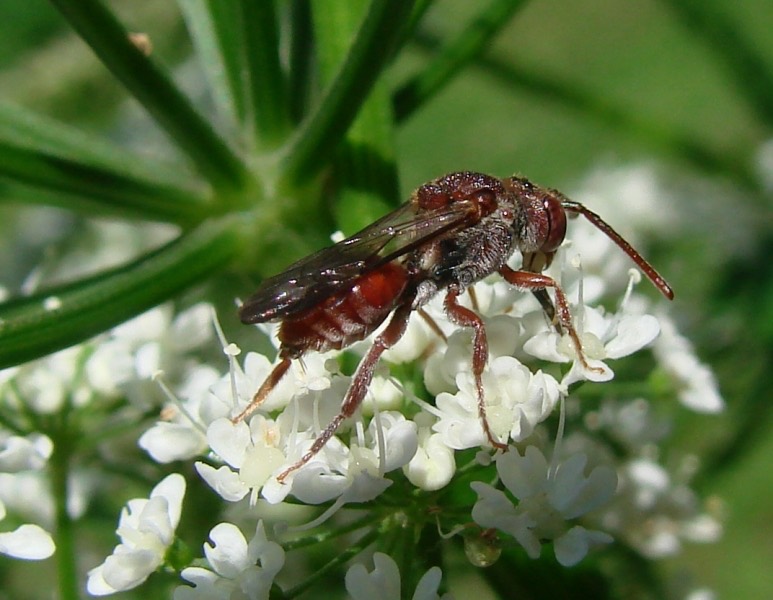
Nomada cuckoo bees (genus Nomada)
With yellow striations on abdomen, may appear wasp-like. Primarily parasitize miner bees (genus Andrena) but also other genera. Rare.
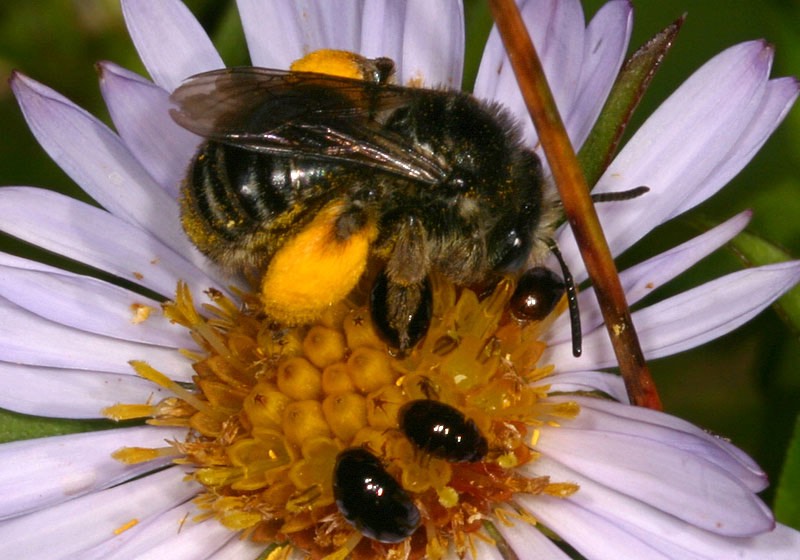
Long-horned bees (genus Melissodes)
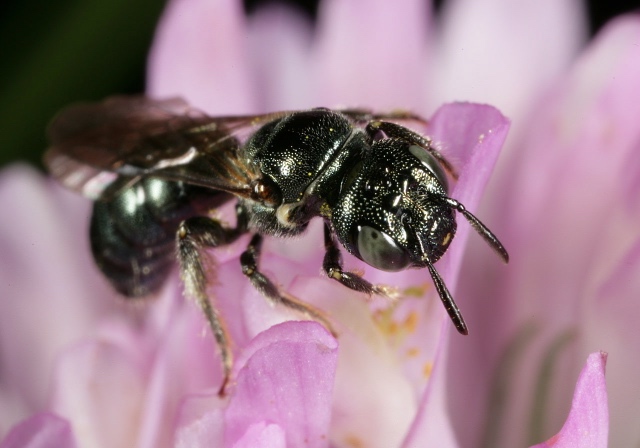
Small carpenter bees (genus Ceratina)
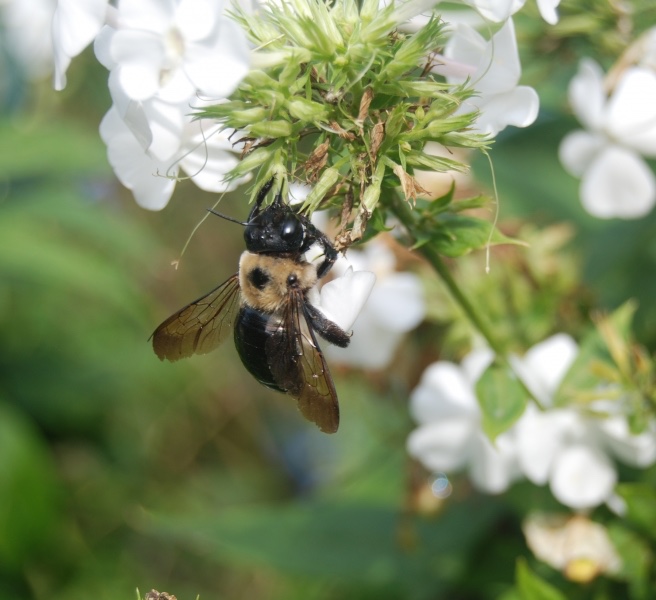
Large carpenter bee (Xylocopa virginica)

